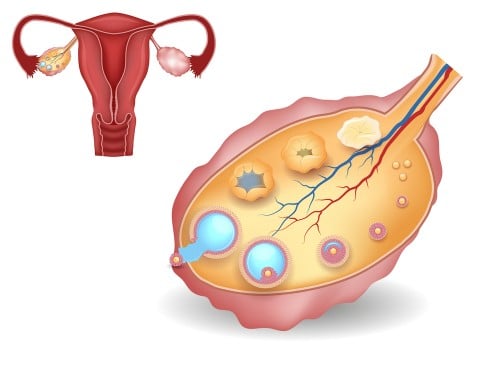Researchers at Tel Aviv University discovered a new genetic mutation that causes primary ovarian failure - which means the absence of a monthly cycle in women under 40

About 1% of women in the world suffer from a phenomenon called primary ovarian failure (or primary ovarian insufficiency), which affects their fertility. But the causes of the failure, which manifests itself in not receiving the menstrual cycle, or the cessation of the cycle at a young age, remain a mystery in 90% of the cases.
A new study from Tel Aviv University brings up a new factor, which so far has not been linked to primary ovarian failure in humans: a unique mutation in a gene known as SYCE1. The study was carried out by a group of researchers led by Dr. Liat DeVries and Prof. Lina Bassel-Wangite from the Tel Aviv University School of Medicine and the Schneider Medical Center. It was published in October 2014 in the Journal of Clinical Endocrinology and Metabolism.
Next generation genetics
"I decided to investigate the issue of primary ovarian failure when I treated two nurses who suffered from the phenomenon," says Dr. de Vries. "The two are daughters of an Israeli Arab family, where the parents are first cousins. Both of them had clear symptoms of ovarian failure: one developed signs of sexual maturation, and outwardly was well developed for her age, but did not menstruate; while the second one, who was already 16 years old, showed no signs of sexual maturation at all. After we tested and ruled out a variety of known factors (chromosomal disorder, toxins, autoimmune diseases and known genetic diseases), we started looking for additional genetic factors in both girls."
For the purpose of the study, the researchers used methods called 'next generation genetics'. They carried out a genetic characterization of the girls, their parents, brothers and sisters, and added to this a complete sequencing of the exomes - the genes that code for the proteins - in the DNA of the two affected girls. For the purpose of control, DNA samples of 90 additional subjects from the Arab-Israeli sector were tested.
Identifying the gene responsible for the failure
The genetic characterization process revealed a unique mutation in the SYCE1 gene in the affected girls. The discovered mutation causes a defect in a protein that plays a central role in the process of meiosis, which is the division process that occurs in the reproductive cells - the eggs and the sperm cells. The parents and three brothers (sons) were found to be carriers of the mutation, while a sister who was not affected, and even married and gave birth to children, does not carry the mutation in the gene.
"In the past, a link between this gene and primary ovarian failure was identified in a laboratory mouse model, but this is the first time such a link has been found in humans," says Dr. de Vries. "We believe that the defect in the protein disrupts the process of meiosis, so no eggs are formed in the ovaries, or damaged eggs are formed. As a result, there is a complete or partial failure in the secretion of the hormones that cause sexual maturation. As we saw with the two sisters, the level of harm may vary from person to person."
Dr. de Vries believes that the identification of the mutation, and the understanding that follows, will save the family a lot of unnecessary heartache. "Now they know that the two injured girls' chances of having children naturally are extremely slim. It is true that the news is hard to digest, but it can save them years of futile fertility treatments. Instead, they will be able to focus on looking for other solutions that exist today - such as egg donation. Also, all family members now understand that they must undergo genetic testing to detect the mutation."
As part of a follow-up study being conducted these days, the researchers want to test additional family members, in order to look for possible effects of the mutation on the boys and men as well.
